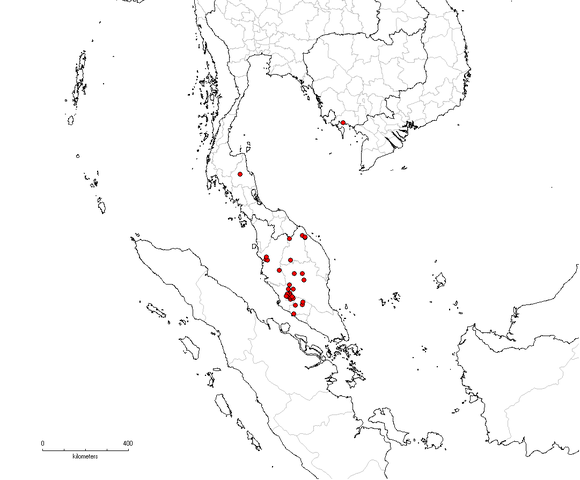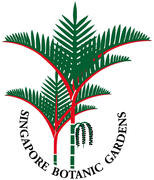Argyreia kunstleri
Nomenclature
Accepted name/Authority/Place of publication:
Argyreia kunstleri (Prain) Prain ex Ooststr., Blumea 5: 383. 1943.
Synonyms:
Lettsomia kunstleri Prain, J. Asiat. Soc. Bengal, Pt. 2, Nat. Hist. 63(2): 100. 1894.
Lettsomia curtisii Prain, J. Asiat. Soc. Bengal, Pt. 2, Nat. Hist. 63(2): 100. 1894.
Argyreia curtisii (Prain) Prain ex Ooststr., Blumea 5: 367. 1943.
Description
Habit:
Woody climber; stems to 30 m high, fulvous-strigose.
Leaves:
Leaves ovate to broadly ovate, 6–15 by 3–10 cm, base obtuse to rounded, apex acuminate, upper side glabrous, underside fulvous hirsute, especially along veins; lateral veins 7–11 per side; petiole slender, 1–5 cm.
Inflorescences:
Inflorescence axillary, cymosely 3–30-flowered; peduncles 5–20 cm long; bracts linear-lanceolate, c. 0.5 cm long, deciduous; pedicels c. 3 mm.
Flowers:
Flower sepals unequal, outer 2 broadly ovate, c. 4.5 by 5 mm, apex rounded, basally (or entirely) hirsute, glabrescent, inner 3 transversely elliptic, c. 6 by 7.5 mm, apex rounded, with 1–3 notches, glabrous or sparsely hirsute; corolla funnelform, 1.5–1.8 cm long, tube broad, red inside, limb shallowly 5-lobed, whitish or pinkish, lobes c. 0.5 mm long, hairy outside, with c. 1 mm wide thin, glabrous margin; stamens just exserted, filaments basally glabrous, anthers c. 2.5 mm; pistil just exserted, 14–16 mm long, disc shallowly 5-lobed, ovary rounded-conical, c. 1 mm long, glabrous, style glabrous.
Fruits:
Berry ellipsoid, c. 15 mm long, red, base enclosed by cupular calyx.
Seeds:
Seed 1, glabrous.
References:
Staples, G. & P. Traiperm. 2010. Argyreia in Convolvulaceae. Fl. Thailand 10(3): 337–371.
Biogeography, Ecology and Natural History
Distribution Map:

Distribution:
Thailand, Malaysia.
Ecology:
Thickets on mountain slope; altitude 680–950 m.
Phenology:
Fruiting in January.
References:
Staples, G. & P. Traiperm. 2010. Argyreia in Convolvulaceae. Fl. Thailand 10(3): 337–371.
Other information
Authorship for webpage
Editor:
George Staples, Esmond Er
Contributors:


A species previously thought to be endemic in peninsular Malaysia, but a single depauperate specimen from peninsular Thailand has been tentatively assigned to A. kunstleri. There is every likelihood that A. kunstleri is plentiful in southern peninsular Thailand as well; further collecting in the border area will determine if this is so.